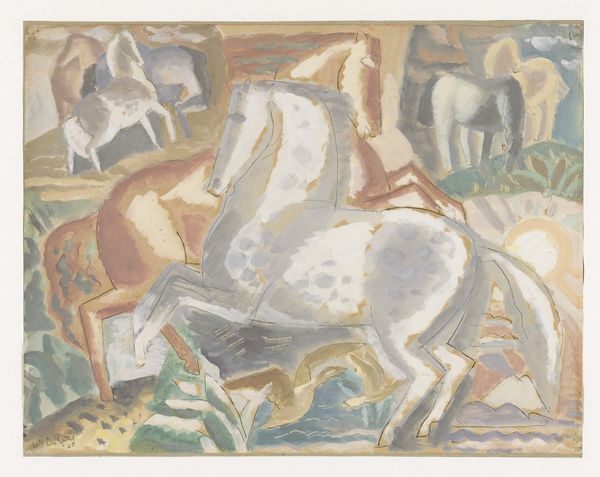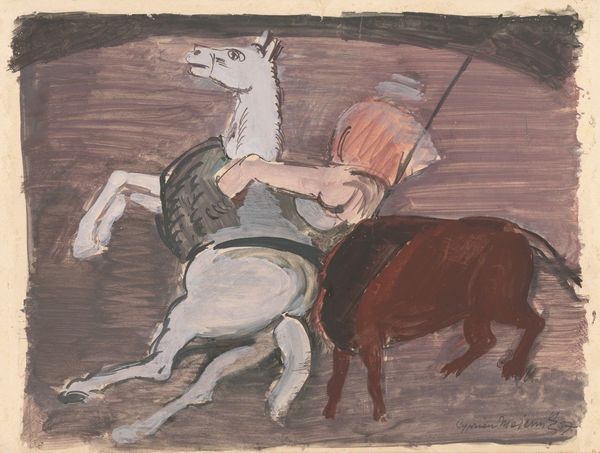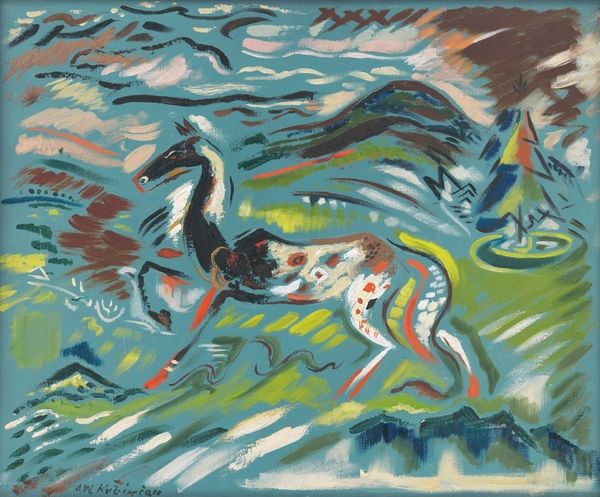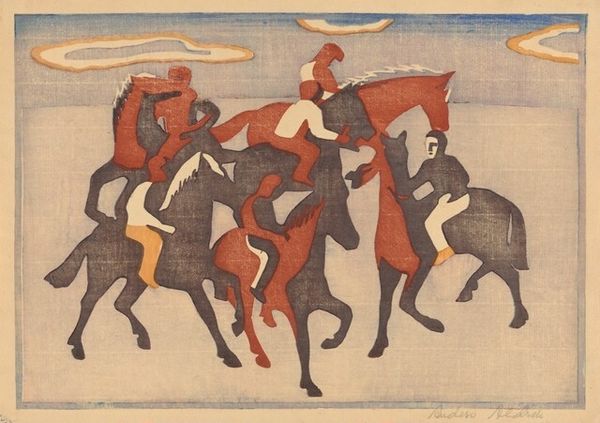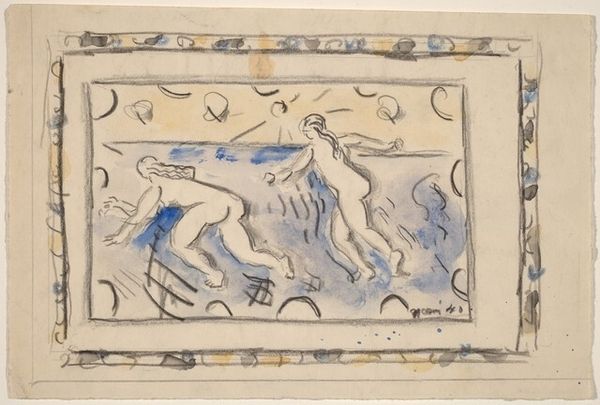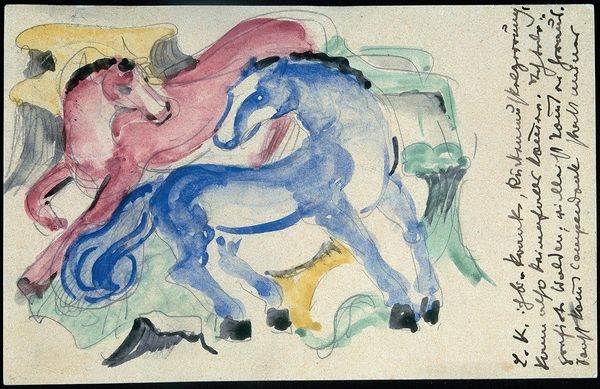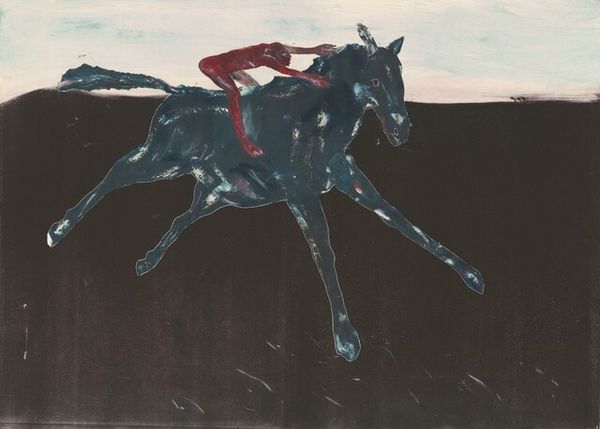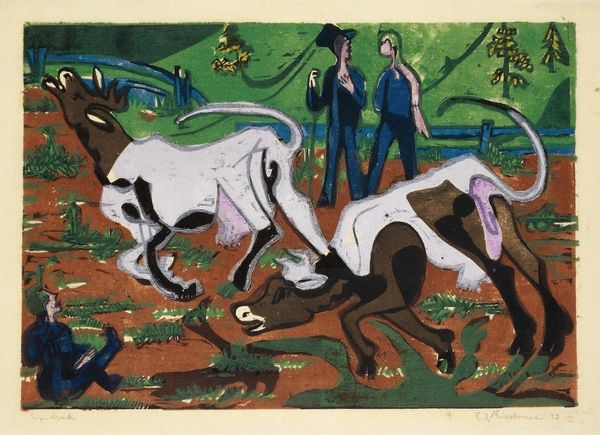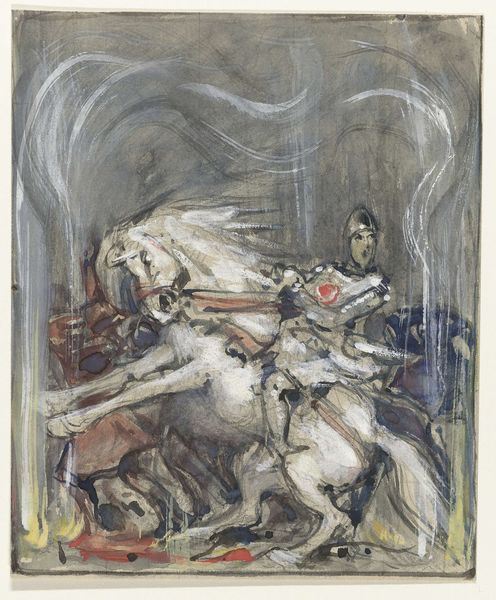
Dimensions: image: 302 x 350 mm sheet: 343 x 404 mm
Copyright: National Gallery of Art: CC0 1.0
Editor: This is Elizabeth Olds' "The Carousel," created in 1940. It's a lithograph, and I'm struck by how it captures movement, but also a certain kind of contained joy. It feels very much of its time. What do you see in this piece? Curator: This lithograph operates as a fascinating commentary on accessibility and escapism during a tumultuous period. Olds made this during the Great Depression. Who had access to leisure? Who was riding high on the carousel and who was left on the ground, watching? What does the flattening of perspective do to the image, politically? Editor: I hadn't considered that economic angle at all. The limited color palette makes it feel less overtly celebratory now that you mention it. Almost like a bittersweet memory. Curator: Exactly. And what about the figures themselves? They’re almost caricatures, aren’t they? Are they truly enjoying the ride, or is there a sense of performance, even desperation, in their faces? Consider this work alongside other WPA era art— what shared anxieties or hopes do you find? Editor: I guess the slightly manic energy of the horses contributes to that sense, too. It's not pure, innocent fun. I’m seeing it less as a straightforward depiction and more as…a social commentary, now. Curator: Precisely. Olds encourages us to question the narratives we tell ourselves about progress and leisure. She's asking, who gets to participate and at what cost? What did you find most insightful about the era and how the imagery reflected that sentiment? Editor: Definitely thinking about it in its historical and social context. It's not just a fun image of a carousel, it reflects the era’s anxieties and inequalities. It makes me wonder what a contemporary version would look like! Curator: Indeed! Keeps the dialogue alive, doesn't it? Thanks to Olds, this 'simple' scene continues its commentary.
Comments
No comments
Be the first to comment and join the conversation on the ultimate creative platform.
